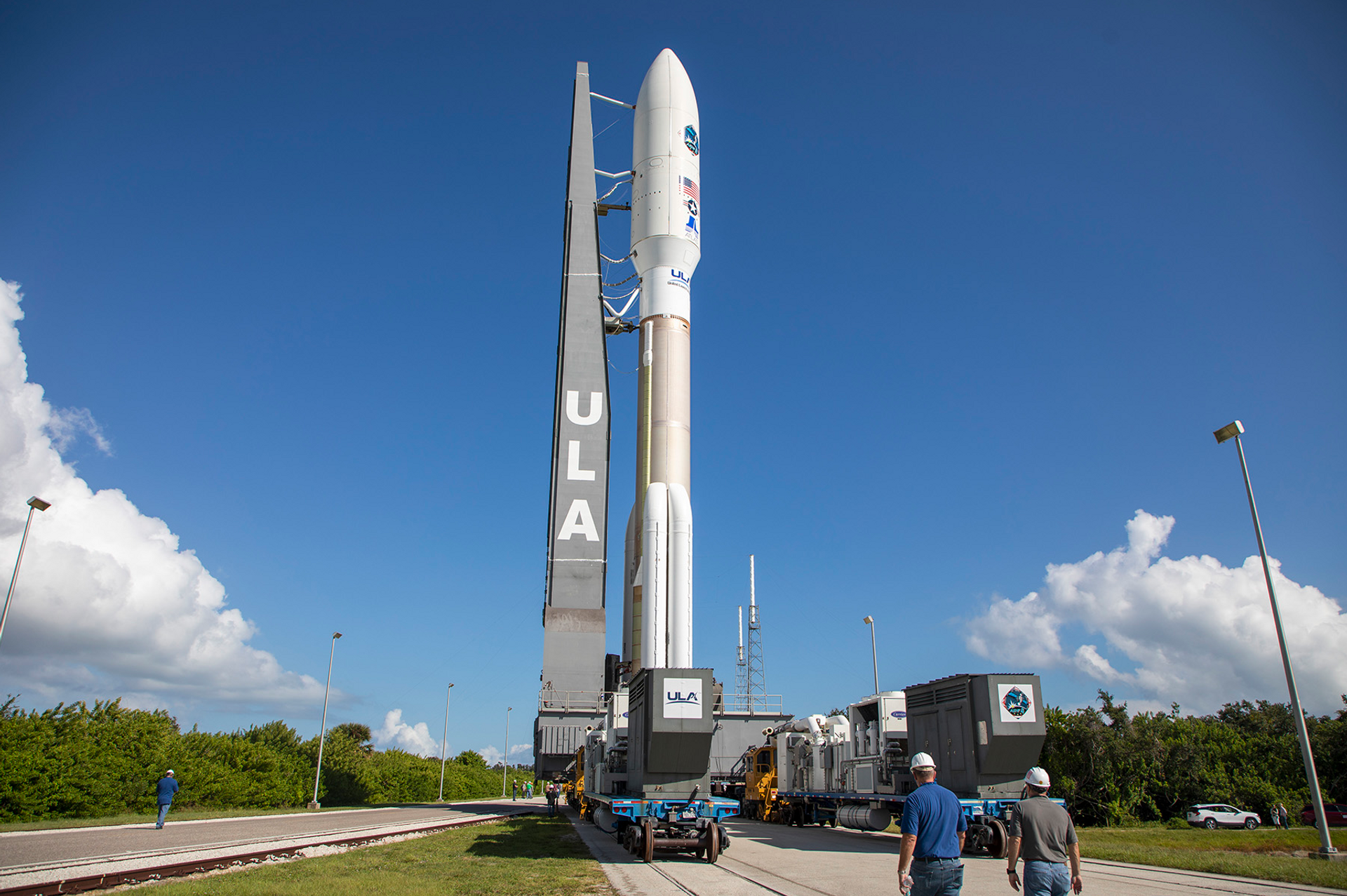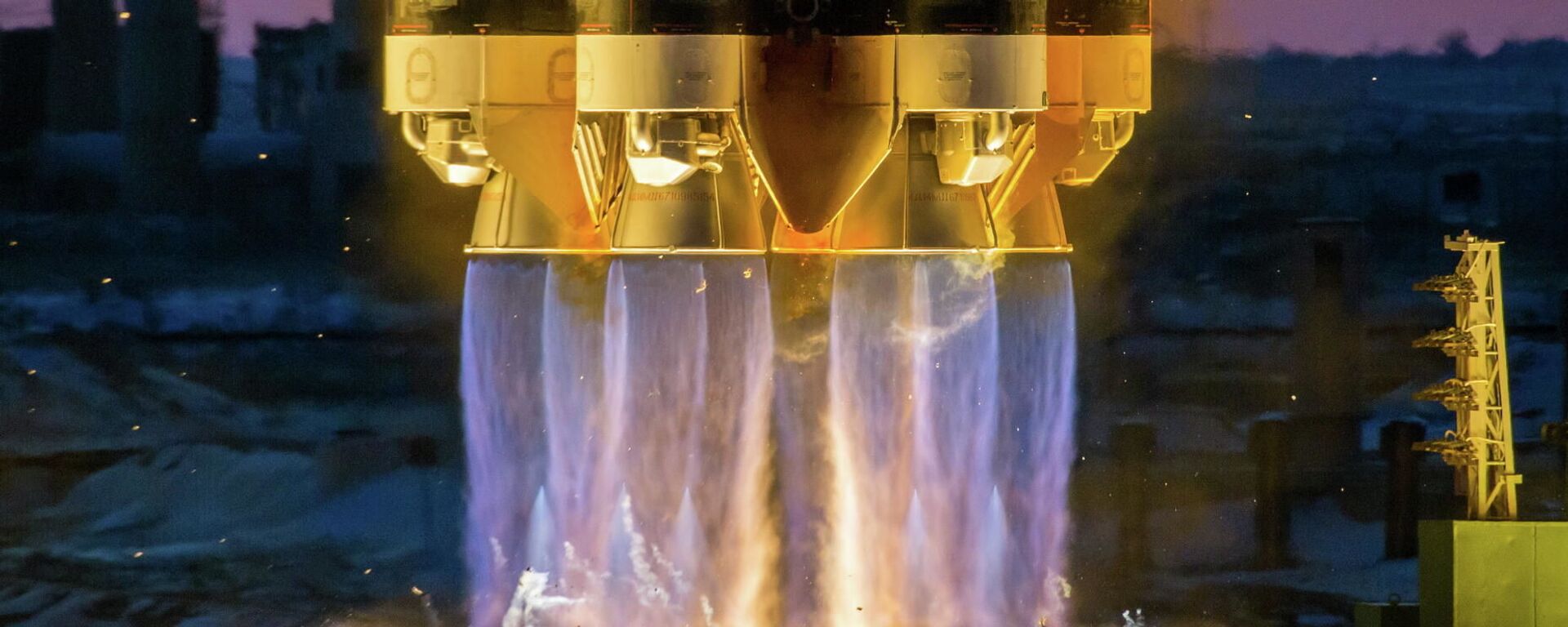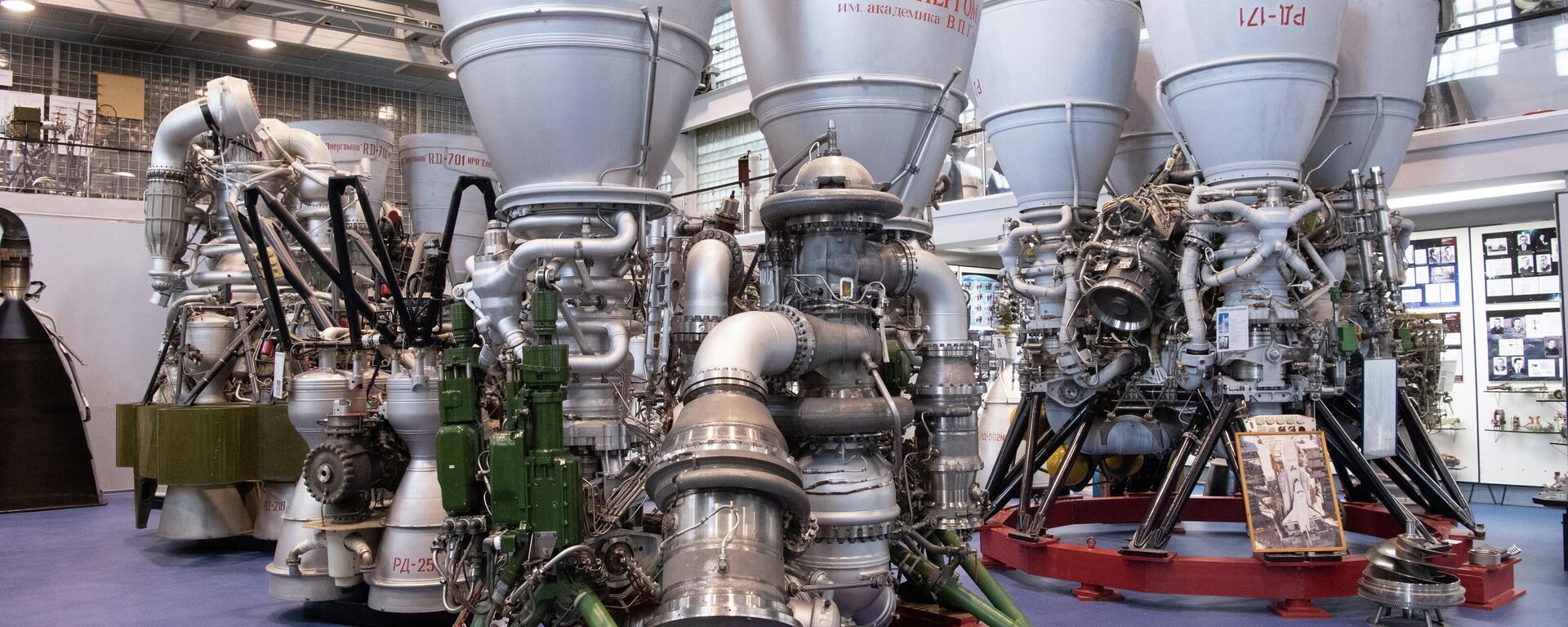https://sputnikglobe.com/20240514/vulcan-programs-delay-shows-us-cant-even-copy-much-less-replace-russias-rocket-engine-know-how-1118431306.html
Vulcan Program’s Delay Shows US Can’t Even Copy, Much Less Replace, Russia’s Rocket Engine Know-How
Vulcan Program’s Delay Shows US Can’t Even Copy, Much Less Replace, Russia’s Rocket Engine Know-How
Sputnik International
A senior US Air Force official has sent defense contractors a strongly worded letter over delays to the Vulcan Centaur heavy-lift launch vehicle program – initiated to replace the workhorse Atlas V, which uses Russian-made RD-180 engines. The delay signals the US’s inability even to copy Russian-made equipment, a leading space researcher says.
2024-05-14T18:20+0000
2024-05-14T18:20+0000
2024-05-14T18:20+0000
analysis
military & intelligence
us
natan eismont
elon musk
americans
russia
united launch alliance (ula)
pentagon
us air force
https://cdn1.img.sputnikglobe.com/img/103380/15/1033801533_0:279:3000:1967_1920x0_80_0_0_466327892114e96945758844ef5488ec.jpg
US Air Force Assistant Secretary Frank Calvelli has sent the heads of Boeing and Lockheed Martin’s United Launch Alliance space divisions an “unusually blunt” appeal highlighting Pentagon concerns over the years-long delays to the Vulcan rocket project.“As the owners of ULA, and given the manufacturing prowess of Boeing and Lockheed Martin corporations, I recommend that you work together over the next 90 days to complete an independent review of ULA’s ability to scale its launch cadence to meet” contract requirements, the official urged.Calvelli expressed concerns about the ULA’s poor flight record to date, pointing out that to meet its contract obligations, it would have to launch 25 missions for the Pentagon by the end of 2027. The alliance, separately bound to launch 38 rockets for Amazon’s Kuiper internet satellite constellation, launched only three missions through 2023.Initially projected to start flying in 2019, the Vulcan program has faced half a decade of delays, owing partly to major issues with the rocket’s BE-4 engines, developed by Jeff Bezos Blue Origin space company. The first Vulcan rocket successfully launched in January of this year, but quickly ran into new problems, including delays to the development of the Air Force’s Soviet-inspired Dream Chaser spaceplane.The program will require a second flight before it can be certified by the Pentagon for use for national security and intelligence collection-related missions, with ULA expecting the program’s second launch to take place sometime later this year.Calvelli did not elaborate on the nature of his concerns with the Vulcan program, instead shifting the discussion to natural security and the US’s strategic competition with Beijing.ULA assures that it's on track to ramping up its rocket production capabilities, with CEO Tony Bruno telling media that the Vulcan “is much less expensive” than the Atlas V with its Russian-made RD-180s, and that future plans to reuse the new, American-made engines will result in “economies of scale” that will make it “cheaper over time.”Boeing responded to Calvelli’s letter by promising to get “on more of a wartime footing to stay ahead of the threat,” and agreed with the senior Air Force officer’s sense that “a quicker and more reliable launch cadence is critical to meeting that need.”Rocket ScienceThe problems surrounding the Vulcan rocket and its engines signal major issues for US space rocket engineering, with the ULA delay demonstrating that American rocket scientists currently can’t even effectively copy Russian engines, much less create safe, reliable engines of their own, says Dr. Natan Eismont, a leading researcher at the Russian Academy of Scientists’ Space Research Institute, told Sputnik.Created in the 1990s, the RD-180 is a derivative of the legendary RD-170/171 series of rocket engines, developed in the 1980s by Energomash for the super-heavy Energiya launch vehicle, which was designed to shuttle up to 100 tons of useful cargo into Low Earth Orbit, to launch the Buran space shuttle, and deploy the next generation of space station components, and pieces of large, Moon and Mars-faring spacecraft of the future.With the Soviet space program curtailed dramatically after the USSR’s collapse, budding cooperation with the US in the 1990s instead led to the development of the RD-180, and the export of over 120 of these engines to the US between 2000 and 2021.The question of why the Americans have not been able to develop an engine with characteristics comparable to the RD-180, or even copy the Russian-made engine, stems from a problem which has plagued the US going back almost to the start of the space age, Eismont says.“Efficiency is measured by specific thrust [the ratio of net thrust/total intake airflow, ed.], which for the RD-180 is 400 tons from the Earth’s surface, and 430 tons in a vacuum. These characteristics are generally achievable. But there’s also the specific impulse [a measure of how efficiently the engine generates thrust, ed.] and here, no rocket apart from ours has been able to achieve comparable parameters. Because to obtain characteristics comparable to those achieved by the RD-180, one must use a fairly high level of pressure in the combustion chamber – more than 200 atmospheres,” which can be dangerous if done improperly, the academic explained.“At the same time, high-frequency oscillations arise,” Eismont added. “The secret lies in determining the moment during testing after which these fluctuations become possible, and immediately turning off the engine at that precise moment. How to do that – what parameters are necessary here, what parameters are acceptable, and how issues can be overcome – it appears that no one apart from our specialists knows this. Simply handing over the engine with all its documentation is not enough. Because there are subtleties in the manufacture of the engine which are difficult to convey using documentation.”Solving this issue will be “critical” for the Americans, Eismont believes.Besides documentation, what US rocket scientists are really lacking is specialists, who can’t be replaced by imported engines, technical or even testing documentation.This isn’t anything new, the academic recalled, pointing out that the US has had problems with its rocketry programs going back to the Apollo program and the days of the Saturn 5 rocket. “If you look at the technical characteristics of these American engines, they were strikingly worse than those that the USSR had at the time,” he said.Ivan Moiseev, the head of the Russian Institute of Space Policy, echoed Eismont’s assessment regarding the RD-180, telling Sputnik that this is an “excellent” engine, with “not a single failure in over 100 launches.”“The contract was concluded in 1996 and completed in 2021 – three years ago. Accordingly, the Americans still have some engines, they can still launch the Atlas V,” Moiseev said.After that, it will be anyone's guess how the Pentagon plans to get its payloads into orbit, unless ULA get its act together, or Washington pulls the plug on the whole thing and puts all its spacefaring eggs in Musk's SpaceX basket.
https://sputnikglobe.com/20240423/roscosmos-offers-kazakhstan-to-continue-proton-rocket-launches-from-baikonur-after-2025-1118068002.html
https://sputnikglobe.com/20190308/russia-spacex-usa-musk-rocket-1073050894.html
https://sputnikglobe.com/20220303/russia-stops-deliveries-of-rocket-engines-to-us-roscosmos-head-says-1093546777.html
russia
Sputnik International
feedback@sputniknews.com
+74956456601
MIA „Rosiya Segodnya“
2024
News
en_EN
Sputnik International
feedback@sputniknews.com
+74956456601
MIA „Rosiya Segodnya“
Sputnik International
feedback@sputniknews.com
+74956456601
MIA „Rosiya Segodnya“
why can't us simply copy russian rocket engines, can rd-180 rocket engine be copied
why can't us simply copy russian rocket engines, can rd-180 rocket engine be copied
Vulcan Program’s Delay Shows US Can’t Even Copy, Much Less Replace, Russia’s Rocket Engine Know-How
A senior US Air Force official has sent defense contractors a strongly worded letter over delays to the Vulcan Centaur heavy-lift launch vehicle program – initiated to replace the workhorse Atlas V, which uses Russian-made RD-180 engines. The delay signals the US’s inability even to copy Russian-made equipment, a leading space researcher says.
US Air Force Assistant Secretary Frank Calvelli has sent the heads of Boeing and Lockheed Martin’s United Launch Alliance space divisions an
“unusually blunt” appeal highlighting Pentagon concerns over the years-long delays to the Vulcan rocket project.
“I am growing concerned with ULA’s ability to scale manufacturing of its Vulcan rocket and scale its launch cadence to meet our needs. Currently there is military satellite capability sitting on the ground due to Vulcan delays,” Calvelli complained.
“As the owners of ULA, and given the manufacturing prowess of Boeing and Lockheed Martin corporations, I recommend that you work together over the next 90 days to complete an independent review of ULA’s ability to scale its launch cadence to meet” contract requirements, the official urged.
Calvelli expressed concerns about the ULA’s poor flight record to date, pointing out that to meet its contract obligations, it would have to launch 25 missions for the Pentagon by the end of 2027. The alliance, separately bound to launch 38 rockets for Amazon’s Kuiper internet satellite constellation, launched only three missions through 2023.
“Launch is critical to our ability to transform our space architecture. We are counting on Boeing, Lockheed Martin, and the ULA team to be successful in getting critical capabilities into space for our warfighters,” the assistant secretary wrote.
The United Launch Alliance kicked off the Vulcan’s development a decade ago amid a push by Washington to phase out the purchase of Russian-made RD-180 engines used on the Vulcan’s predecessor, the Atlas V, to put satellites into orbit. The Vulcan has a stated launch capacity of 27.2 tons, and an estimated expected cost of $100-$200 million per launch, compared to 8.2-18.85 tons and $1090 million per launch for the Atlas V, depending on variant.
Initially projected to start flying in 2019, the Vulcan program has faced half a decade of delays, owing partly to major issues with the rocket’s BE-4 engines, developed by Jeff Bezos Blue Origin space company. The first Vulcan rocket successfully launched in January of this year, but quickly ran into new problems,
including delays to the development of the Air Force’s
Soviet-inspired Dream Chaser spaceplane.
The program will require a second flight before it can be certified by the Pentagon for use for national security and intelligence collection-related missions, with ULA expecting the program’s second launch to take place sometime later this year.
Calvelli did not elaborate on the nature of his concerns with the Vulcan program, instead shifting the discussion to natural security and the US’s strategic competition with Beijing.
“The United States continues to face an unprecedented strategic competitor in China, and our space environment continues to become more contested, congested and competitive. We have seen exponential growth of in-space activity, including counterspace threats, and our adversaries would seek to deny us the advantage we get from space during a potential conflict,” he wrote.
ULA assures that it's on track to ramping up its rocket production capabilities, with CEO Tony Bruno telling media that the Vulcan “is much less expensive” than the Atlas V with its Russian-made RD-180s, and that future plans to reuse the new, American-made engines will result in “economies of scale” that will make it “cheaper over time.”
Boeing responded to Calvelli’s letter by promising to get “on more of a wartime footing to stay ahead of the threat,” and agreed with the senior Air Force officer’s sense that “a quicker and more reliable launch cadence is critical to meeting that need.”
The problems surrounding the Vulcan rocket and its engines signal major issues for US space rocket engineering, with the ULA delay demonstrating that American rocket scientists currently can’t even effectively copy Russian engines, much less create safe, reliable engines of their own, says Dr. Natan Eismont, a leading researcher at the Russian Academy of Scientists’ Space Research Institute, told Sputnik.
“There have been attempts to copy RD-180 engines from the moment they were sold to the Americans,” Eismont recalled. From the early 2000s onward, “launches were carried out using the Atlas III, and then a lot using the Atlas V, [which] provided for nearly half of all American launches. This is significant...There were attempts to copy the RD-180 from the start, and to this day they remain just that - attempts. The Americans haven’t been able to create an engine with characteristics close to matching the RD-180.”
Created in the 1990s, the RD-180 is a derivative of the legendary RD-170/171 series of rocket engines, developed in the 1980s by Energomash for the super-heavy Energiya launch vehicle, which was designed to shuttle up to 100 tons of useful cargo into Low Earth Orbit, to launch the Buran space shuttle, and deploy the next generation of space station components, and pieces of large, Moon and Mars-faring spacecraft of the future.
With the Soviet space program curtailed dramatically after the USSR’s collapse, budding cooperation with the US in the 1990s instead led to the development of the RD-180, and the export of over 120 of these engines to the US between 2000 and 2021.
The question of why the Americans have not been able to develop an engine with characteristics comparable to the RD-180, or even copy the Russian-made engine, stems from a problem which has plagued the US going back almost to the start of the space age, Eismont says.
“Efficiency is measured by specific thrust [the ratio of net thrust/total intake airflow, ed.], which for the RD-180 is 400 tons from the Earth’s surface, and 430 tons in a vacuum. These characteristics are generally achievable. But there’s also the specific impulse [a measure of how efficiently the engine generates thrust, ed.] and here, no rocket apart from ours has been able to achieve comparable parameters. Because to obtain characteristics comparable to those achieved by the RD-180, one must use a fairly high level of pressure in the combustion chamber – more than 200 atmospheres,” which can be dangerous if done improperly, the academic explained.
“At the same time, high-frequency oscillations arise,” Eismont added. “The secret lies in determining the moment during testing after which these fluctuations become possible, and immediately turning off the engine at that precise moment. How to do that – what parameters are necessary here, what parameters are acceptable, and how issues can be overcome – it appears that no one apart from our specialists knows this. Simply handing over the engine with all its documentation is not enough. Because there are subtleties in the manufacture of the engine which are difficult to convey using documentation.”
That’s not to say that American rocket scientists will not be able to ever overcome these difficulties, the observer emphasized. They can and will, but doing so “requires a lot of money and time,” and knowledge enough to pinpoint when testing enters the danger zone to prevent the destruction of “very expensive” test equipment.
Solving this issue will be “critical” for the Americans, Eismont believes.
“Here, [the ULA] can turn to [Space X CEO Elon] Musk, where, in general, the same tasks were set, and the company has its own rocket engine. For Musk too, everything didn’t work out straight away or to the end. Here, in general, we can say that Musk has not achieved the required level of reliability. SpaceX’s engine is in fact also an attempt to copy the RD-180... They are probably further along than say Boeing or others involved [in the Vulcan program, ed.]. But nevertheless, he had to come to terms with the fact that he could not manage without accidents. That is, the process turned out to be slower and more expensive than planned,” the academic explained.
Besides documentation, what US rocket scientists are really lacking is specialists, who can’t be replaced by imported engines, technical or even testing documentation.
“What you need are people involved in the project. Who will give the Americans these people? No one,” Eismont said.
This isn’t anything new, the academic recalled, pointing out that the US has had problems with its rocketry programs going back to the Apollo program and the days of the Saturn 5 rocket. “If you look at the technical characteristics of these American engines, they were strikingly worse than those that the USSR had at the time,” he said.
“It’s difficult to say why this was, but the Americans lagged behind here from the start. As for Soviet and Russian engines, they display an exceptional level of reliability. From the time that the Americans purchased these particular engines from us, they have not had any accidents. That is, the entire program was developed and carried out in accordance with the experience accumulated by that time by Energomash. Here, they really are ahead of everyone else.”
Ivan Moiseev, the head of the Russian Institute of Space Policy, echoed Eismont’s assessment regarding the RD-180, telling Sputnik that this is an “excellent” engine, with “not a single failure in over 100 launches.”
“The contract was concluded in 1996 and completed in 2021 – three years ago. Accordingly, the Americans still have some engines, they can still launch the Atlas V,” Moiseev said.
After that, it will be anyone's guess how the Pentagon plans to get its payloads into orbit, unless ULA get its act together, or Washington pulls the plug on the whole thing and puts all its spacefaring eggs in Musk's SpaceX basket.









